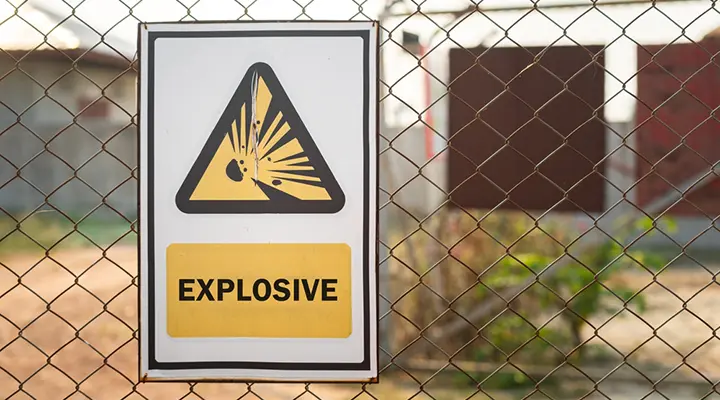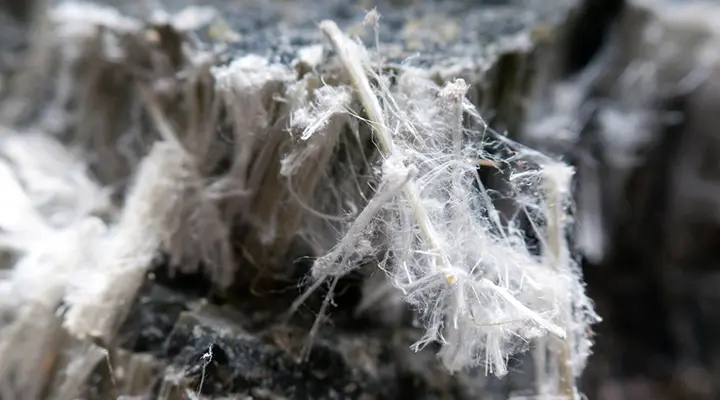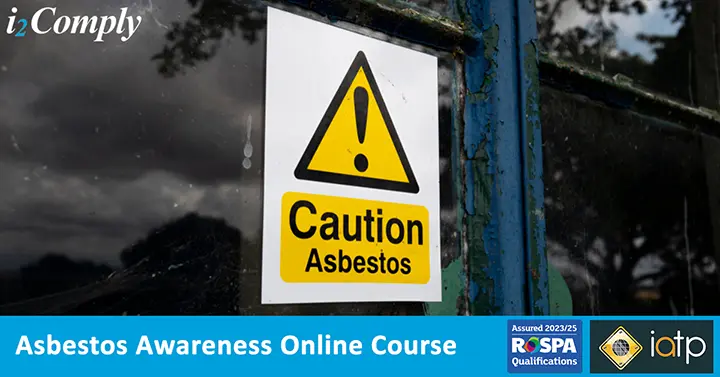When the building industry first discovered the properties of asbestos, it seemed like a miracle. This material isn’t affected by water, making it resistant to dampness and mould. It is virtually fireproof, extremely strong and doesn’t conduct electricity.
Its use grew quickly, and it was installed in schools and offices nationwide. But the golden hour of asbestos didn’t last forever. It is now known as a carcinogen, and exposure to this mineral can be deadly. Despite now being banned in 69 countries, more than 90,000 people around the world continue to die from asbestos diseases every year.
Closer to home, Asbestos is still present in around 80% of UK schools. Having an understanding of why asbestos is so dangerous and knowing how to protect staff and students from asbestos in schools matters. In this article, let’s look at the prevalence of Asbestos in UK schools.
Who is most at risk of asbestos exposure?
Tradesmen are the most at risk of asbestos exposure, especially those involved in refurbishment and maintenance. The i2Comply asbestos awareness course is a tailored course for the likes of electricians, painters, decorators, construction workers, plumbers & pretty much anyone working in the trades. Our training is Category A level, meaning anyone can take the course.
What is secondary asbestos exposure?
You don’t have to be directly exposed to asbestos to be at risk. Secondary asbestos exposure is where asbestos fibres get into someone’s hair or clothes and travel with them, e.g., someone can accidentally bring fibres home, which can be inhaled by other family members.
Secondary exposure is one of the reasons people still die from asbestos-related illnesses, as it can take years/decades to develop after exposure. However, asbestos-related illness and death should have peaked in 2020.
How does asbestos affect schools?
As mentioned, the majority of schools in the UK have some level of asbestos. If you think about how many were constructed in the last 50-70 years and how prevalent the material was, it’s more common than not to find it. The import and use of blue and brown asbestos was only banned in the UK in 1999.
Why are teachers at risk of asbestos exposure?
Teachers and students can be at an elevated risk of asbestos exposure – especially in ageing or decaying buildings that were constructed when asbestos was a common material.
For example, the data around female mesothelioma deaths show that teachers and administrative workers are at higher risk than the rest of the population – due to the lingering presence of the material in schools and offices.
Why is asbestos still present in our schools?
While asbestos is dangerous when disturbed, it is not necessarily a threat if it is in good condition. In many older buildings, It is a matter of logistics and budget – it would take a considerable amount of time and money to refurbish all the buildings containing asbestos, which includes:
- 80% of schools
- 94% of NHS buildings
- 74% of university buildings.
That’s why around 6 million tons of asbestos are still inside 1.5 million buildings in the UK, left over from pre-1999 construction. If your school or office building was built after 1999, it probably does not contain asbestos.
Where is asbestos found in schools?
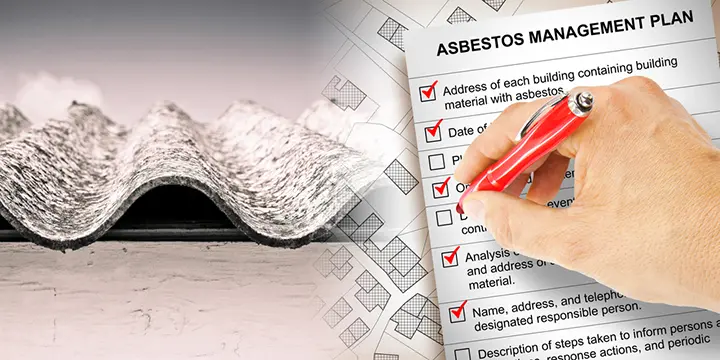
The best way to find out where asbestos is present in your school is to ask to see the asbestos management plan. This should be readily available for all members of staff as well as any contractors who might work at the school.
Asbestos Containing Materials (ACMs) should also be marked, but this may not be the case if the school you are working at is not managing asbestos correctly.
Schools built before the 1980s are likely to have the highest levels of asbestos. Asbestos is likely to appear in:
- Roof tiles
- Boiler flues
- External window panels
- Asbestos cement wall and roofing sheets
- Insulation
Asbestos can be even more pervasive, though. At one time, it was even mixed into the cement between bricks. The Department for Education (DfE) has published guidance for schools on managing asbestos. You can start this process with our Category A Asbestos Awareness course (please note this course does not allow you to work with asbestos or conduct asbestos removal).
How dangerous is asbestos in UK schools?
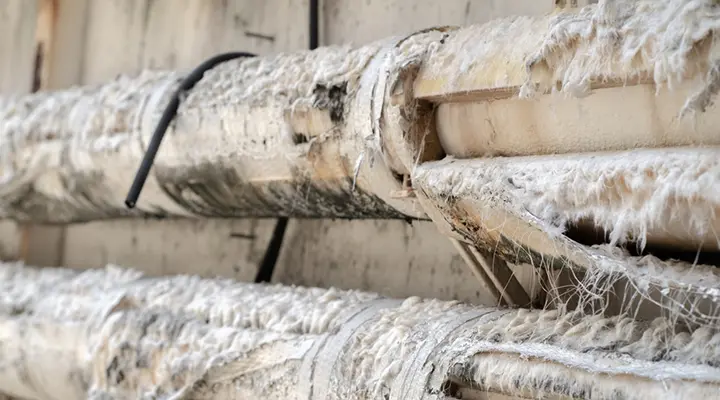
The Health and Safety Executive has said that if schools properly manage asbestos, there is a very low risk to people in school buildings. The problem, according to campaigners and unions, is that asbestos is often handled poorly, and even low levels of exposure can cause serious health problems. Another problem is that the HSE does not conduct inspections of every school – instead, it is down to schools to self-report the presence and management of asbestos.
474 teachers died of asbestos-related cancer between 2001 and 2022, and children are five times more likely to contract the disease mesothelioma than adults aged 30 – with the disease typically appearing 20 years after exposure.
Asbestos becomes dangerous when damaged or disturbed because it is easy to breathe in the tiny fibres it releases. These fibres stay in the lungs and chest for long periods. This can lead to scarring of the lungs, lung cancer or mesothelioma.
Not everybody who is exposed to asbestos will suffer health problems. For example, you are at a lower risk if exposed in smaller amounts and for shorter periods. But the problems are serious when they occur, severely limiting quality of life and sometimes leading to death.
As budget cuts affect school repairs and refurbishment, it can become more and more dangerous over time. Asbestos exposure can occur after accidents or intentional vandalism, such as a student damaging wall panels containing the mineral.
Does my school have asbestos?
It is the responsibility of local authorities and academy trusts to have plans in place to manage asbestos in schools. (As we’ve already discussed, not everyone agrees about how effectively the authorities do this).
There is no perfect list of schools in the UK containing asbestos – mainly because the presence of asbestos needs to be self-reported by schools or local authorities.
The best way to find out if your schools contain asbestos – or if any of this asbestos is a risk – is to employ a professional company to audit the school premises. School staff should take asbestos awareness training so they can recognise ACMs and know not to disturb it to keep students and team members safe.
Although it is not a legal requirement to employ a private company to carry out an asbestos survey, the National Education Union believes that all schools should have surveys carried out (unless the school management knows that no asbestos is present on the premises, for example, in the case of a new build).
Practical asbestos advice for teachers and school staff
Here are some simple ways that teachers can keep students and team members safe from asbestos exposure.
Asbestos management tips:
- Find out who the duty holder is for asbestos in your school. (The duty holder is typically the employer, which could be governors, trustees, or the local council, depending on the school).
- Ensure your school has carried out an asbestos survey, which should be updated every 6 – 12 months. Signs should clearly mark any asbestos containing materials (ACMs).
- Ensure your school has an asbestos management plan and is available for staff and contractors to access. The school should log potential asbestos exposure and consult union health and safety representatives on asbestos management.
- Never attempt to remove asbestos in-house. Only a professional and qualified professional should handle asbestos.
Practical asbestos safety tips:
- Don’t put pins or staples into ceilings or wall panels when creating displays or decorating the classroom. They could contain asbestos.
- Do not screw furniture, display boards, interactive whiteboards or any other equipment into wall panels. They could contain asbestos, so you should take suitable safety precautions.
- Be careful when handling historical objects. Old gas masks and army helmets can contain asbestos. These should not be handled by students or staff unless you can confirm that they are free from asbestos and safe to use.
- If you notice that materials potentially containing asbestos are in poor condition (leaky roofs, holes in wall panels), you should report this and the area should be closed off until it is confirmed safe.
Get accredited online asbestos awareness training
As you have learnt, exposure to asbestos can be life-threatening. Therefore, do not hesitate and train your school staff today.
With i2Comply, you will find our IATP-approved and RoSPA-assured online asbestos awareness training course is the perfect course, as it:
- Complies with the Control of Asbestos Regulations 2012
- Has been audited and approved by IATP
- Is assured by RoSPA Qualifications
- Is 100% online training
- Includes a downloadable IATP Certification on completion
Get in touch today to learn more about our training services.

